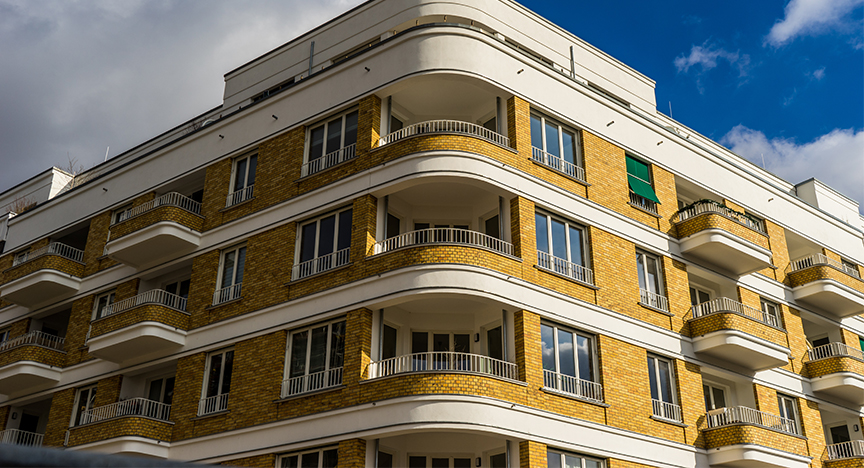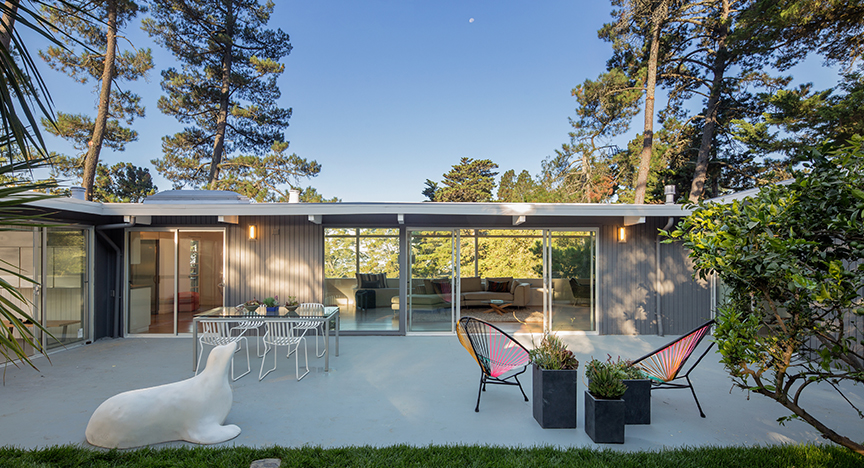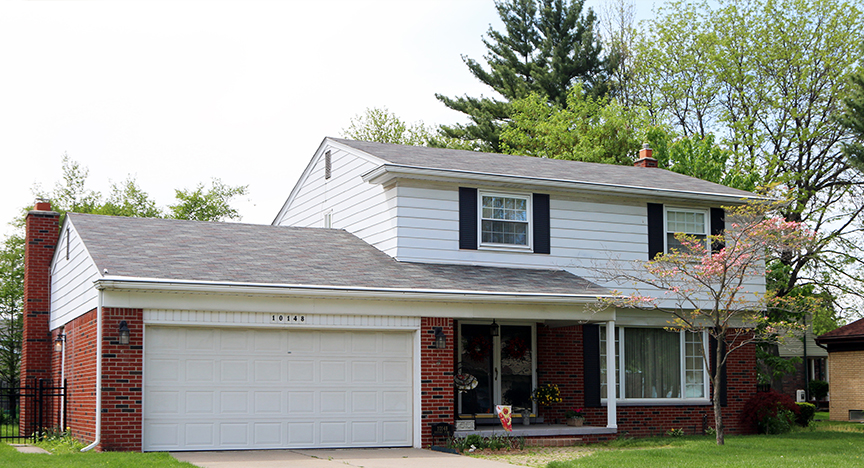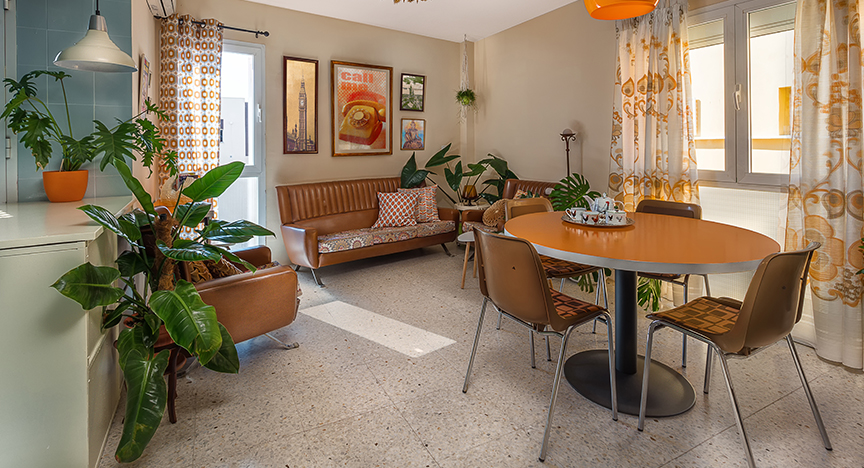Two key interior design trends filtered through homes and workplaces in the 1950s. The mid-century modernist movement from the forties was still very popular and a new Scandinavian style began to influence British furniture. Later in the decade, another style known as Retro grew in popularity as the economy started booming.
Affordability and prosperity
During the start of the fifties, Britain was still feeling the economic impacts of two world wars. The UK's major cities were still experiencing the aftermath of the bombings. It was also extremely hard for families to borrow money, find good housing and rationing was worse than ever.
The Scandinavian trend would have complemented this way of living, pairing its minimalist form with affordability. Scandi-inspired living was (and still is) a very trendy style for the home and offices of Britain. It featured simple lines and natural materials from the Modernism era. Fashionable items such as tables, chairs and beds were made from low-cost, durable materials like timber so that every person could enjoy its stylish functionality.
People’s love of wood didn’t stop there. Wood panelling was also introduced to many homes in the 1950s to give a visually warm aesthetic. This design technique gave depth to rooms, in particular the dining room, living room and bedrooms and didn’t cost much to install.
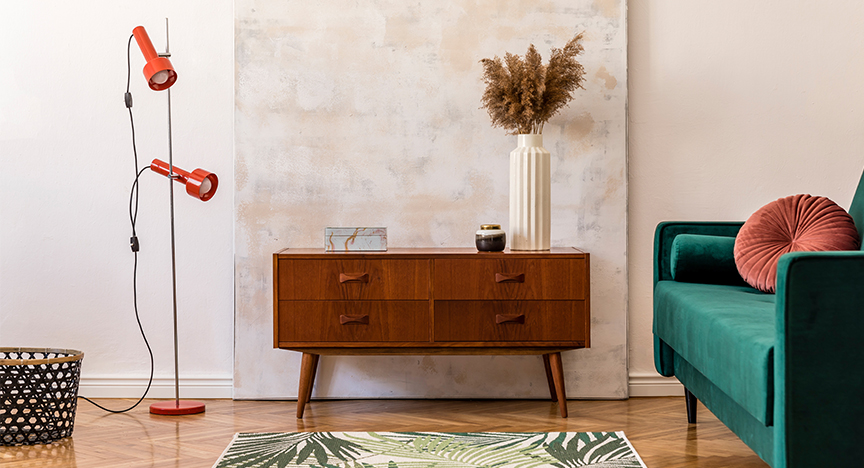
Over the coming years, the standard of living rose considerably. The health of British people significantly improved thanks to the launch of the NHS in 1948 and Dr Jonas Salk also invented a vaccine for poliomyelitis. Rationing also ended in 1954 and many homes now had staples like a vacuum cleaner and washing machine.
In 1953, Queen Elizabeth II was crowned, and many people bought TV sets to watch the coronation - some who were lucky could even watch this spectacle in colour. The BBC was still the only channel available until 1957 when ITV also began broadcasting. By the mid-fifties, British industries were surging ahead of other countries in Europe. The economy was booming and there was a demand for labour which meant higher wages all around.
Youth culture
For the first time, young people had a disposable income, which led to new youth culture in Britain. Rock’n’Roll flooded the radio with the sounds of superstars such as Elvis Presley. This brought a fresh sense of adventure and excitement amongst the younger generation and men’s fashion was revolutionised by this musical movement. Working-class men in the UK copied Hollywood stars like Marlon Brando and James Dean’s informal attire and jeans became everyday wear.
Eccentric styles were adopted by teenagers and young adults which also saw the making of the Teddy boy - a famous British cult. Teddy boys wore narrow trousers, velvet-collared jackets and greased their hair back into quiffs - a far cry from the formal wear that men were used to from decades gone.
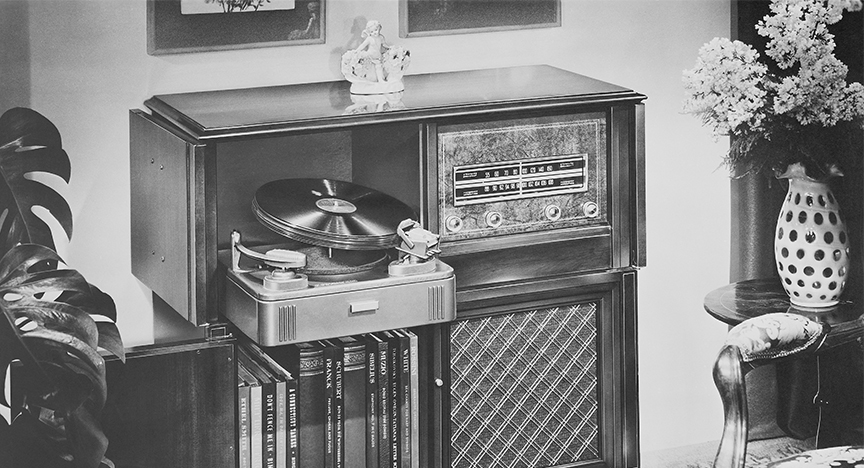
Games and pastimes were also growing in popularity. The fifties saw the start of video games with electronic displays, colour video cameras, roller skates, skateboards and the first Barbie dolls being mass-produced.
Fun and optimism
From the mid-fifties, the mood was lively and optimistic. Muted pastels from the forties were replaced by brighter shades of colour like baby blue, mint green, daffodil yellow and bubble-gum pink. These colours were common in upholstery, curtains, appliances, and bathroom fixtures. Floral and damask patterned wallpapers also became trendy in households. This was known as the Retro interior design style.
Around the world, new accomplishments like the first ascent on Mount Everest and the formation of the National Aeronautics and Space Administration (NASA) in 1958 increased the overall positive mood of the country. Brussels also hosted a world fair to celebrate the atom and nuclear age.
Back in Britain, the social norms were changing. People’s eating habits were evolving with the introduction of new foods and tastes. This was influenced by the 1940s immigrants settling and bringing new foods and flavours to the Great British menu, as well as new trade agreements and goods imports. Women were also breaking the mould, Barbara Mandell became the first woman newsreader, Rose Heilbron became the first woman judge and Hilda Harding became the first woman bank manager. The 1950s were empowering and nothing seemed out of reach.
An era full of energy
So much change happened during the fifties, which is why you could have two contradictory design styles evident during the same decade. Both styles celebrated different progressive thinking in the UK. The Scandinavian style offered people elegance for low cost when times were still tough. Whereas the Retro style reflected a much more affluent and joyous period when the economy and culture was thriving. Both styles a still hugely popular today in homes, restaurants, hotels, and nightclubs - although the colourful bathroom appliances are a little less hit and more miss these days.


